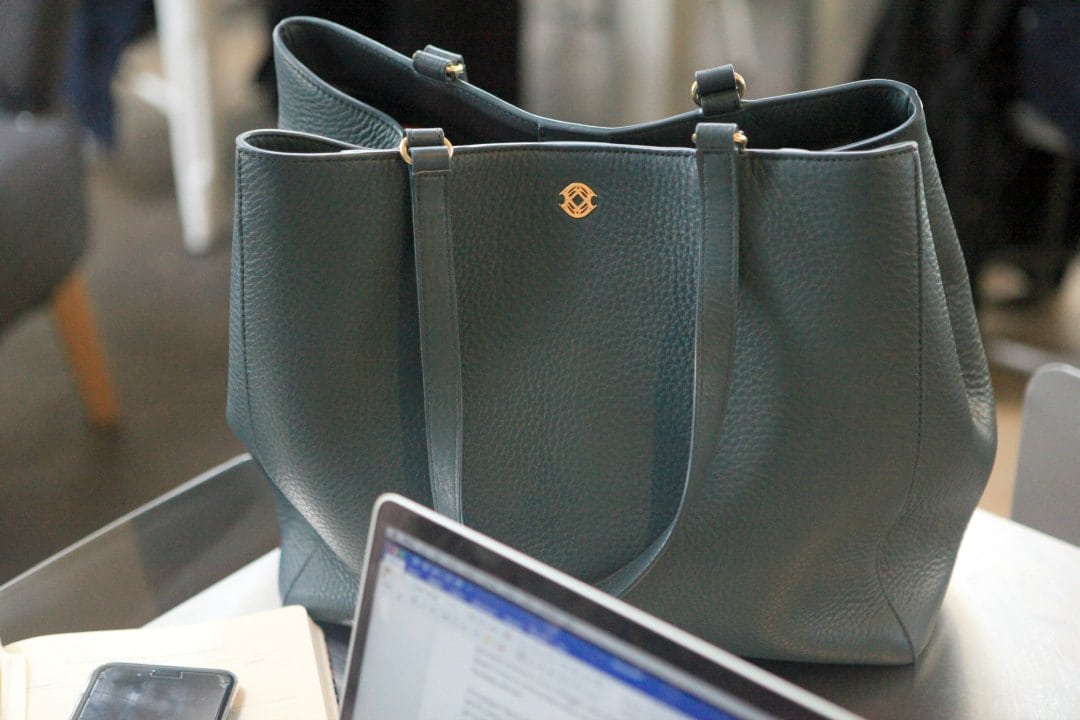Tuesday’s Tip: What to do When
When You Get a Run in Your Stocking:
- The Nailpolish Tricks Works. If you are at home or near polish, apply clear or a non-noticeable color. This will freeze the run and you can get by without any more damage.
- Any product that will stiffen the fabric – I have been stuck at work or away from home and have gotten a run in my hose or tights. I have found that hairspray works decently, and if it is under my skirt, I have even used Wite-Out to control the run.
When Your Favorite Pant’s Lining Rips:
To have a pair of trousers glide instead of bump over curves, a lining is a must. Problem is that many pant fabrics have a touch of stretch, while synthetic linings do not. After many sittings, squattings and living in trousers, the lining often tears at the crotch or bum. As that the lining is smaller than the pants and not stretchy, it is hard to have a tailor repair them without altering the fit of the pants.
- If it isn’t noticeable, wear the pants with the torn lining. If the lining starts to hang (imagine polyester chaps under your suit pants), feel free to trim the lining so it does not bunch. I have been known to completely cut the lining out of dark colored trousers and wear them until I can purchase a replacement pair (or if it a suit and not terribly noticeable). I know some who have had a tailor replace the lining, but I find that to often cost almost as much (or if on sale, more!) than a new pair of trousers.
- Invest in a full-length mirror and a hand mirror. Place the full-length mirror in a spot that gets lots of natural and artificial light and really check out your rear view. If there is any bunching of fabric, VPL (visible panty lines) or anything else unattractive, do not continue wearing the trousers. It is far better to wear the same trousers three times in one week than wear unflattering clothes.
You Get Deodorant on Your Clothes:
- At home: If you have a steamer, fill it with distilled water and apply it to the spot. The deodorant will magically disappear. This is great for very gentle fabrics like silks. If you do not have a steamer, a steamy bathroom removes some subtle deodorant streaks.
- A bunched pair of pantyhose (use a light color) will take deodorant off most knits and synthetic pieces. I have also used the foamy gripper part of hanger from the dry cleaners and a black washcloth on black sturdy fabrics.
- Away from home: Often if you rub a garment against itself, the deodorant streak will disappear.
When You Spill on Your Clothes:
- Invest in a Tide To Go pen! I am famous for spilling on myself. I have carried all types of stain removers, and I have found this to be the very best out there. It has removed wine, olive oil, liquid foundation, pen and much much more. It sometimes may leave a water ring or not completely remove the stain, but it works as a pre-treater and will help have your garment wearable after cleaning.
- If you do not have a stain remover on you, immediately attempt to blot the area with clear water. Do not rub for you may make the stain worse and damage the fibers. If you have access to liquid dish detergent, apply a bit to an oily stain. I have had dish detergent remove months-old stains on silk knit sweaters and delicate dresses. Bridal salons often use dish detergent mixed with water to remove stains off of sample dresses.
Your Trouser’s Hem Unravels:
- At home: if you know how to properly hem, go for it! However a straight stitch will not do it. You need to make the hem invisible to keep the pants being quality. If you do not have the sewing skills, invest in having your cleaners or tailor perform the repair for you.
- Stitch Witchery and other equivalents are terribly popular, but they often change the line of a trouser.This is good for sturdy pieces like chino trousers, but little else. You spend good money on your clothes; to get your money’s worth through the years you need to treat and repair them with care.
- Away from home: always carry a few safety pins in the change purse portion of your wallet. These can be used at the side seams to temporarily keep your pant from dragging, as well as a multitude of other uses in fashion emergencies. I have been known to use small pieces of duct or electrical tape to hold up the hem, and even with stiff fabrics like tweeds I have stapled inside the side hems (less damage to the fabric, and a staple perpendicular to the hem within the side seam is almost invisible).
You Get a Snag in Your Sweater:
- Take a needle or safety pin and from the inside of the garment, pull in the snag. NEVER CUT A SNAG! This could create a large hole or run and ruin the garment. If the snag is very long, try typing a knot in it from the inside and then you can snip the excess.
You’re Famous for Losing Buttons and You Bought Something with Buttons:
- As soon as you get the garment home, paint all the threads with nailpolish.
- If it is a coat or a garment that will get much wear and tear on the threads attaching the button, add another layer of thread. You don’t have to be a seamstress to thread a needle, do a couple swipes through the button holes. Swing the thread a few times around the thread between the button and garment to protect the stitching, and then knot on the inside of the garment.
- Either keep the spare buttons on the garment (if not noticeable – I have all my coat buttons still inside hanging in their packages), or on the package that spare buttons come in, write the brand and description of the garment for reference. I have a jar on my bureau that holds all spare button packets and I dig through it to find the replacement when I have a button loss.
- When you toss clothes (past the point of donating) remove the buttons and save in case of emergency. I have a few small pearl-white buttons in my change purse, and some horn, wood, shell and clear buttons in my button jar from garments that got torn, paint splattered or otherwise ruined. These often will closely match those on a current garment that has lost a button.







I realy liked your blog,cant wait to read the next one 🙂
I found a great new product that keeps deodorant streaks from getting on your clothes while you dress. It’s been a life saver and I’ve not had to wipe even one streak off of a dress since the day I got it. I got mine at http://www.dresssure.com
Sincerely, Lauri
Can you please do an entry about traveling fashionably? It’s so hard to pack for overseas travel. You want to look good, but don’t want to pack a lot. Thanks!
As usual a great post! You rock Dilly, you have made me from a mess to a woman in the year I have read you!
I love, love, love, your blogs!!! How you have the time to keep the blogs up is beyond me, but I am glad that you do!
Thanks
Mrs. H, that is a genius tip. I hardly see lined pants for sale anymore.
I want to encourage anyone who is considering hemming their own pants by saying that invisible stitching is fast an easy. All you have to do is to make a tiny stitch on the garment above the hem, then go to the hem part and make another tiny stitch, leaving a big “/” shape on the inside. Then you’ll repeat that, creating a /// shape on the inside. The secret to it not unraveling is when you start the “” part, going downward, you go backwards with that tiny stitch instead of forward. That little criss-cross there adds durability. Then do the same at the bottom.
Hand sewing can be done while listening to a trashy tv show, which adds to the fun of it.
Also, as a tip for what to do with pants with no lining. In the undergarments section, along with the slips, is an undergarment that looks like a slip, but it has legs like pants. It is made of slip material, so it would work well under a pair of trousers in which the lining had come out. Of course, they probably wouldn’t work with tight-fitting pants, but straight-legged trousers would work nicely.